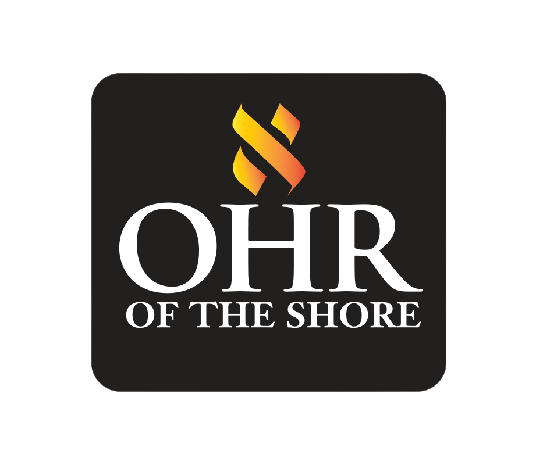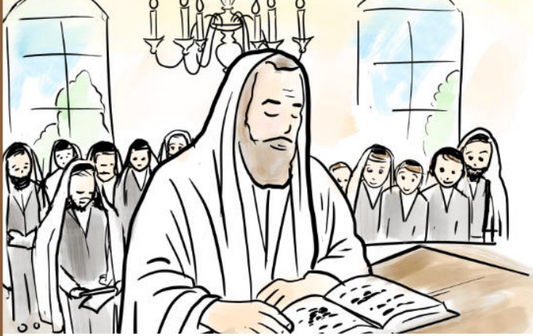To view/download this article in PDF form click here
Rabbi Ezra Ghodsi
On Pesah, beyond abstaining from eating actual hamets, even the slightest traces of hamets must be avoided. Throughout the kitchen, appliances and cookware absorb hamets, and therefore, require purging. While it is easier, and even preferable, to have separate Pesah utensils cookware this is not always possible, especially for parts of the kitchen like the sink, counters, and oven.
1) How is koshering done?
The method used to kosher utensils or appliances depends on how they were previously used. There are four main ways to kosher.
1. Libun hamur: This is an intense koshering process that requires heating the utensil to a very high temperature (~900 degrees) to burn any absorbed taste. Running a self-clean cycle on an oven also qualifies as libun hamur. This method is necessary for utensils that have absorbed tastes without a liquid medium while on the fire.
2. Libun kal: This is a lower level of purging through heat. The utensil can be placed in an oven at 480 degrees for half an hour. This method is generally used in place of hagalah.
3. Hagalah: This method involves purging through boiling water and is used for items that have absorbed tastes through cooking with liquid.
4. Irui: This involves pouring boiling water over the utensil and can only be used if the absorption happened through pouring, such as spills on a counter or a sink.
2) When should I Kosher?
All koshering should be done before the time on Erev Pesah that one can no longer eat hamets. If the need arises to kosher after this time, one should seek guidance from their Rabbi. It is customary to wait twenty-four hours prior to koshering to ensure that the koshering is effective.[1]
3) What do I need to do before koshering?
Any item being koshered must first be cleaned so it is immaculate and there is not any residual matter left anywhere on the item. Any utensil with crevices or grooves needs to cleaned extremely well or else the koshering cannot be effective. Utensils that are extremely tedious to clean should preferably not be koshered.
4) What can be koshered?
Metal, wood (non-varnished), marble, and plastic[2] can be koshered; however, ceramic, porcelain, or earthenware cannot be koshered. Something that can be ruined in the koshering process also cannot be koshered out of concern that one may refrain from koshering properly. Therefore, delicate items or electric appliances require a careful assessment if they can be koshered.
5) What is the process for hagalah?
- Clean the utensils thoroughly, and wait twenty-four hours since they were last used with hot.
- Fill a separate, large pot with water and bring it to a boil. (The status of the pot is irrelevant; it can be meat, dairy, or hamets as long as the pot hasn’t been used in the past twenty-four hours and is thoroughly clean. A Pesah pot can also be used since the utensils being koshered have not been used in the past twenty-four hours).
- Submerge the entire utensil (including the handles) for a few seconds in the boiling water. The utensil does not need to be submerged all at once; you can submerge one part, then the other. If you use tongs to hold part of the utensil, be sure to resubmerge the part that was held by the tongs so that water directly reaches every spot.
- When dipping the utensils, it is important that the water remains boiling. If the temperature drops and the water stops boiling, leave the utensils in the hot water until it boils again.
- After koshering, rinse the utensils with cold water.
6) What is the process for irui?
- Clean the utensils thoroughly and wait twenty-four hours since the last usage with hot.
- Pour hot water in one continuous stream onto what is being koshered. The water should be poured directly on each spot; not poured on one side and left to flow to the other side.
- When pouring, what’s being koshered must be dry so that the hot water does not get cooled off. Often when koshering the counter or sink it is necessary to heat up more water. It is important that the area which did not get koshered yet is dry before continuing to pour. Similarly, when koshering a sink, one should start from the lowest point and move their way up, (it can be helpful to pour in a spiral motion), so that the area where they are koshering is not yet wet.
7) Can I use a steamer?
Simple commercial steamers do not release a stream of moisture wet enough or hot enough to be considered qualified to kosher.
8) Does everything need to be koshered?
Items that are not used with heat only require a thorough cleaning and do not need to be koshered. This includes the refrigerator, freezer, and pantry closets, which can be used for Pesah after they have been washed and wiped down.
Because one does not generally eat food when it is very hot, braces and dentures do not require koshering. However, one must thoroughly clean them from all residual food.
9) Does glass need to be koshered?
Glass can be used without koshering (as long as it has been thoroughly cleaned), however, if there are any metal trimmings (or other materials) they must be koshered accordingly. Colored glass is the same as regular glass.
Pyrex and other glass cookware technically have the leniencies of glass, even if used for cooking or baking;[3] however, it is very common that residue gets stuck on or lodged in scratches or crevices and extra care must be taken that the utensil is cleaned until it is immaculate.
10) What should I do with utensils that are not being koshered?
Utensils that are not being koshered for Pesah, should be cleaned, and then locked away. Alternatively, the cabinets can be taped shut in a way that they will not be mistakenly accessed by anyone, including house help, on Pesah.
How do I kosher a ...?
Many common household appliances cannot be koshered either because they will break during the koshering process or because they cannot be fully cleaned (e.g. air fryer, Betty Crocker, toaster oven, etc.). One should remove any visible hamets from these appliances and then lock them way till after Pesah.
Barbecue grill:
Although meat and chicken are generally used on a barbecue, we usually find ourselves using all types of sauces that contain hamets or sometimes place bread on the grill. Since cooking on a grill involves direct contact between the food and the grates (and sometimes the walls), libun hamur is required.
One must first clean out and wipe down all areas where food may be stuck, including the cavity, drip pan, and all other intricate crevices throughout.
Method #1: One can call someone with experience to kosher the grill by using a blow torch over each area of the grill until it is red hot.
Method #2: One can buy new grates and kosher the rest of the grill by burning it out on the highest for an hour or so. When using this method, one should be careful that food does not touch the walls of the grill when grilling on Pesah.
Blender:
Needs a very careful cleaning to ensure there are no leftover food particles. This is not always feasible as sometimes food gets stuck in between or under the blades.
A smoothie blender can be koshered by pouring hot water (irui) over the blade and the inside of the container. When pouring hot water, it should first be poured on the bottom and then directly on each side of the container; it is not sufficient to just pour hot water until the container is filled.
For a food processor or blender used for blending foods or dressings, the blade needs to be koshered by hagalah in boiling water.
For an immersion blender, a new one should be purchased for Pesah.
Coffee Maker:
A coffee machine or Keurig used with all types of coffees or K-Cups should be cleaned of coffee residue and then run on an empty cycle. If it is used or placed on the counter next to hamets throughout the year, the outside should also be washed down well.
Countertops/Tables:
For Formica, marble, and granite, one should clean well and kosher by pouring boiling water (irui) over the entire countertop surface. Alternatively, one can cover the counters with a thick plastic or covering.
For glass, just wash well, preferably with warm/hot soapy water to deep clean.
Cutlery:
Knives, forks, spoons, and other utensils that come in direct contact with food, must first be cleaned well between the curves and crevices. They can then be koshered through hagalah.
Ceramic knives cannot be koshered.
Can-openers, corkscrews, or the like, which do not come in contact with hot food, need only to be washed very well. If it is not practical to clean well, then they should be replaced.
Dishwasher:
To kosher the dishwasher, clean it out well, including the food trap and any place where food can be stuck. Then pour bleach or dishwasher detergent in the filter area and run an empty cycle (with detergent in the dispenser) on the hottest setting.
High-Chair:
Wash down well in and around the chair and if there are coverings, remove them and wash well. Wash the tray well and no further koshering is required.
Hot Plate:
For a metal hot plate, it should be scrubbed down very well, turned to the highest setting for an hour. It can then be used on Pesah if covered with two layers of heavy-duty foil. If there are handles, they should be covered also, or they can be koshered by pouring boiling water (irui).
Microwave:
Some do not kosher microwaves due to koshering concerns. If one would like to kosher the microwave, they can wash it out very well, then heat a bowl or cup of water with soap in it for approximately twelve minutes so the sides get wet from condensed steam.
Even after koshering, it is preferable for one’s food to be covered when using the microwave throughout Pesah.
A convection microwave needs to be koshered like a regular oven (see below).
Ooni / Outdoor pizza oven
If it reaches 900 degrees that would qualify as libun hamur. Preferably the stone should be switched out for a new one, or it can be koshered if both sides of the stone are burnt out face down at 900 degrees to remove all residue.
Oven:
Clean and wipe down the entire oven, especially in the cracks and crevices within the door. Preferably, a self-clean cycle should be run with the oven racks remaining inside to kosher it for Pesah.
If your oven does not have a self-clean mode, then put on the highest setting for one hour. If not running a self-clean cycle, food may not be placed directly on the racks on Pesah.
There is a relatively new self-clean called AquaLift self-clean or a Steam-Clean that uses a low heat and steam to clean the oven. Such a self-clean cycle will not kosher the oven, however is beneficial to use to clean the oven prior to koshering.
Oven trays/Sheet Pans:
As food directly touches the tray while in its heat source, it requires libun hamur. Since many trays cannot withstand going through a self-clean cycle without getting ruined, they therefore cannot be koshered.
Pans:
Cast iron pans should be placed in the oven on a self-clean cycle which will both clean it and kosher it at the same time.[4]
Non-stick pans should not be koshered, and new ones should be purchased.
Pots:
It is difficult to fully clean all residue in and around the handles and rim. However, if perfectly clean, a metal pot can be koshered through hagalah. Non-stick pots should not be koshered, and new ones should be purchased.
If the pot is too big to fit into another pot, then hagalah can be done in the following manner: fill up the pot to the top and bring to a boil. Once it has reached a rolling boil, gently place a rock or piece of metal that was first heated on the fire into the pot, causing the water to overflow.
Alternatively, you can heat up a saucepan with a bit of water, and when both pots are boiling slowly place the saucepan into the bigger pot causing it to overflow.
Rice Cooker:
If used only for rice, can be cleaned thoroughly, then filled with water and run through a cycle of cooking.
Sink:
Regardless of the material the sink is made from,[5] one should first dry the sink and then pour boiling water over its entire surface and spout. The drain should be cleaned very well from any residue. The strainer should either be cleaned and then pour hot water on it, or it can be replaced. New sponges should be used.
Serving trays:
If made from metal or plastic they can be koshered through pouring boiling water (irui). This is only if they were used to serve (hot/warm) food and not if they were used to heat up food on the fire or in the oven. Ceramic serving trays cannot be koshered.
Stovetop:
- Gas:
- Grates: Clean the grates to remove residue and grease. There are different opinions what level of koshering is necessary for the grates. The easiest (and preferred) option is to do libun kal by either A) turning on fires for twenty minutes, or B) the grates can be placed in the oven on 480 degrees for half an hour. Some are stringent to run it through a self-clean cycle which would be libun hamur (although this will discolor the grates).
- Surface: For the surface area of the stove, if it is of metal, either cover with foil or pour boiling water over it.
- Flat Top/Griddle: This piece will require libun hamur similar as it had direct contact with food while on the fire. If the coating will not get ruined it can be placed in an oven on self-clean cycle. If not, it should be put away. (In general, year-round, if one has a shared stove for meat and dairy, one should be mindful that the griddle does not come in contact with the overflow.)
- Electric Stove:
- Electric with coils: For the surface area of the stove, if it is of metal, either cover with foil or pour boiling water over it. Turn the burners on the highest until they turn red.
- Glasstop: For an electric stovetop with tempered glass, wash very well including and around the rim and crevices. Then turn on each heating element (not necessarily simultaneously) for half an hour.
- Induction Stove: Clean the surface very well. Then heat a pot of water on each induction element until the water boils for a few minutes.
Towels:
Search for visible remaining pieces of food, and then wash them in the washing machine with hot water and detergent. The same would apply for cloth aprons, bibs, and kitchen mitts.
Pressure Cooker:
Due to the technical difficulties of koshering it should be put away.
Warming Drawer:
As a warming drawer does not heat itself to a degree of koshering, however does become hot enough to absorb, it is difficult or impractical to kosher.
[1] דמלבד הטעם שכתבו הפסוקים (עי' משנ"ב סי' תנ"ב סק"כ) דגזירה שמא יגעיל כלי של איסור בפחות מששים, יש להוסיף עוד טעם דמה שהולכין בכלי אחר רוב תשמישו הוא דוקא אם הוא אינו בן יומו מתשמיש המועט, ואין הכל בקיאין בזה. ויש בזה עוד נפק"מ לענין בדיעבד אם לא הכשיר כדינו.
[2] כ"כ בחזו"ע עמוד קנ"א, ובאור לציון פ"י הי"ג, ובעוד פוסקים. אולם דעת הגר"מ פיינשטיין שאין להכשיר פלסטיק או כלים משאר חומרים סינתטיים לפסח.
[3] כ"כ בחזו"ע עמוד קנ"ה, ובאור לציון פרק י' אות י"ב. ומ"מ כתב באור לציון שם שטוב שלא להשתמש בכלים אלו בפסח בכלי ראשון על האש.
[4] אע"פ שמרן בשו"ע בסימן תנ"א סעיף י"א פסק דמחבת מותרת בהגעלה, מ"מ כתב באור לציון פרק י' סוף אות ח' שאם דבוקה במחבת שכבת שומן שאי אפשר להסירה, השומן מפריע להגעלה ע"ש. ולכן ישים את המחבת בתנור ויפעיל את הניקוי עצמי, וזה יסיר את כל השומן וגם יכשיר אות המחבת לפסח.
[5] כ"כ בחזו"ע עמוד קנ"א דכיור, אפילו הוא מחרסינה, יערה עליו רותחין. [וכתב עוד דנכון לערות ג' פעמים]. ועי' גם באור לציון פרק י' אות י"א באורך.




